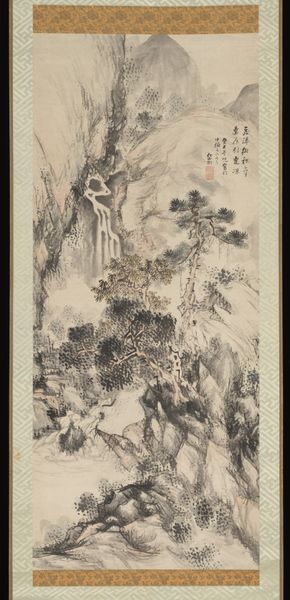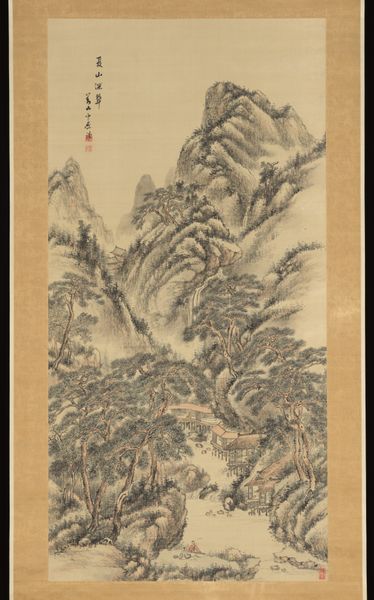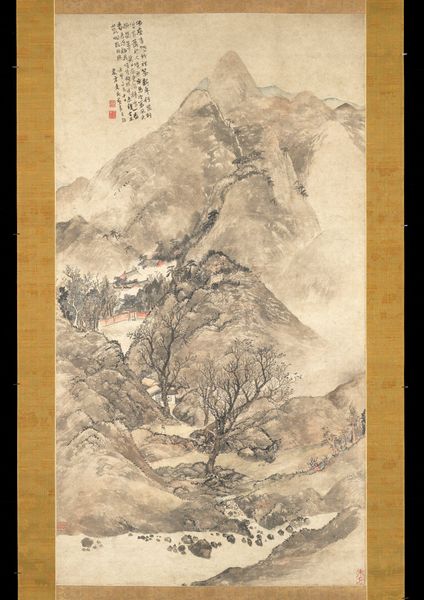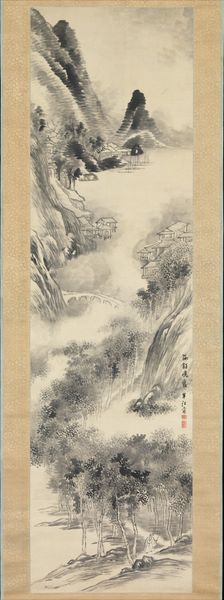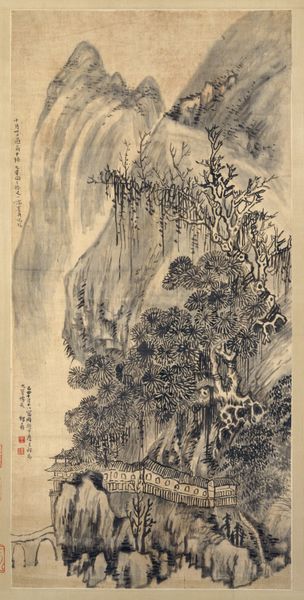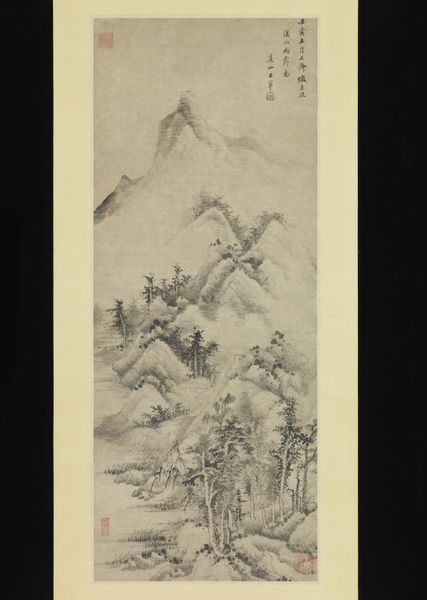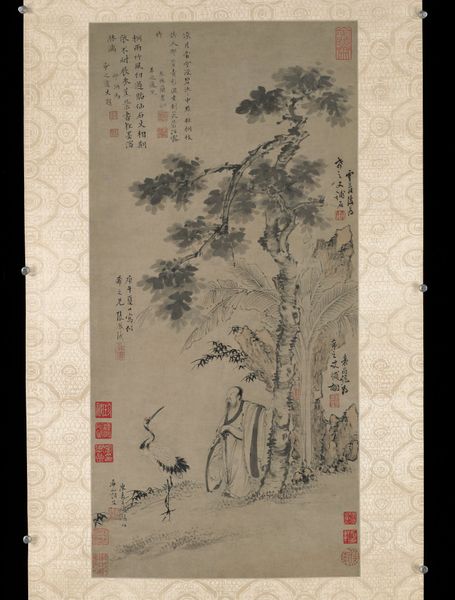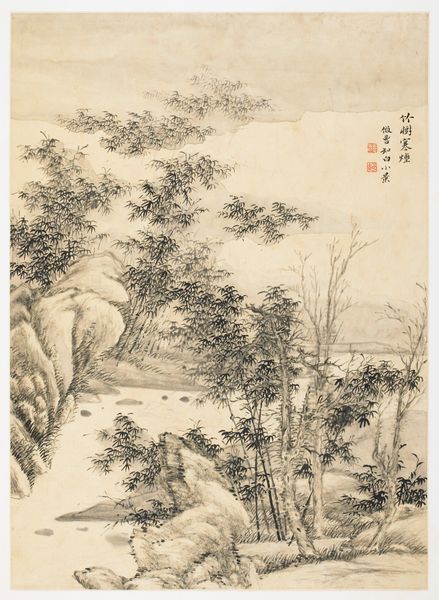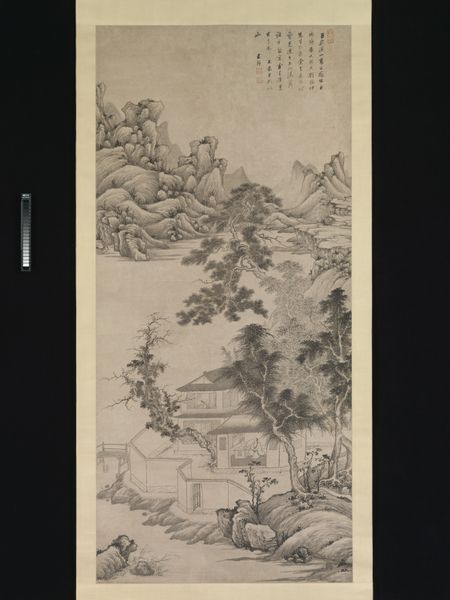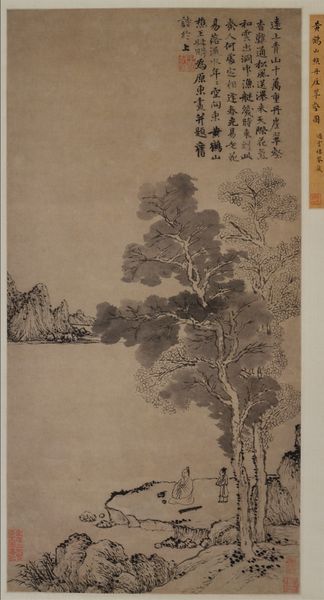
drawing, tempera, ink
#
pen and ink
#
drawing
#
tempera
#
asian-art
#
landscape
#
waterfall
#
ink
#
orientalism
Dimensions: Image: 61 15/16 x 34 3/16 in. (157.3 x 86.8 cm) Overall with mounting: 111 1/4 x 41 15/16 in. (282.5 x 106.5 cm) Overall with knobs: 111 1/4 x 45 1/16 in. (282.5 x 114.5 cm)
Copyright: Public Domain
Curator: Before us, we have Nakabayashi Chikutō’s "Landscape with Waterfall," crafted in 1841. It is currently held at the Metropolitan Museum of Art. The medium combines ink and tempera drawing to truly capture a tranquil scene. What is your initial take on this artwork? Editor: Well, it’s dreamy. All soft edges and blurred details. Like a memory, perhaps, of a place that exists more in the mind than in reality. The monochromatic palette gives it such a calming presence. Curator: Indeed. The gradations in ink are meticulously rendered, aren't they? Note how Chikutō uses light and shadow to articulate depth. The composition is also meticulously structured; the waterfall cascades in distinct stages. It lends itself to a reading as both vertical and horizontal, and it adheres to many formal properties of literati painting. Editor: Mmm. It does feel structured. The trees offer points of stability amid all the falling water. But for me, it evokes the sublime—that overwhelming sense of nature's power, made intimate through his artistic lens. Makes you feel small, but comforted, you know? The kind of feeling you want on a bad day. It’s quite skillfully wrought! The artist's ability to instill emotion using minimalist means—so smart! Curator: Precisely. The artist successfully navigates a complex negotiation between the raw power of nature and human artistic control through calculated brushwork and structural elegance. Editor: It’s like the essence of a landscape, captured with such economy of means. It encourages a very meditative contemplation of nature... it could even spark introspection on our place in it. Do you agree? Curator: I concur completely. In deconstructing this art, we observe how aesthetic execution serves intellectual significance—offering perspectives on reality and existence. Editor: That it does! I find myself drawn into its serenity. Well, this was enriching. Now I might seek my own landscape. Curator: Agreed. A close study of visual composition often reveals that which words cannot.
Comments
No comments
Be the first to comment and join the conversation on the ultimate creative platform.
